The 100 Best Books of the 21st Century

As voted on by 503 novelists, nonfiction writers, poets, critics and other book lovers — with a little help from the staff of
The New York Times Book Review.
Many of us find joy in looking back and taking stock of our reading lives, which is why we here at The New York Times Book Review decided to mark the first 25 years of this century with an ambitious project: to take a first swing at determining the most important, influential books of the era. In collaboration with the Upshot, we sent a survey to hundreds of literary luminaries, asking them to name the 10 best books published since Jan. 1, 2000.
Stephen King took part. So did Bonnie Garmus, Claudia Rankine, James Patterson, Sarah Jessica Parker, Karl Ove Knausgaard, Elin Hilderbrand, Thomas Chatterton Williams, Roxane Gay, Marlon James, Sarah MacLean, Min Jin Lee, Jonathan Lethem and Jenna Bush Hager, to name just a few. And you can also take part! Vote here and let us know what your top 10 books of the century are.
We hope you’ll discover a book you’ve always meant to read, or encounter a beloved favorite you’d like to pick up again. Above all, we hope you’re as inspired and dazzled as we are by the breadth of subjects, voices, opinions, experiences and imagination represented here.

100
Tree of Smoke
Like the project of the title — an intelligence report that the newly minted C.I.A. operative William “Skip” Sands comes to find both quixotic and useless — the Vietnam-era warfare of Johnson’s rueful, soulful novel lives in shadows, diversions and half-truths. There are no heroes here among the lawless colonels, assassinated priests and faith-stricken NGO nurses; only villainy and vast indifference.
Liked it? Try “Missionaries,” by Phil Klay or “Hystopia,” by David Means.
Interested? Read our review. Then reserve it at your local library or buy it from Amazon, Apple, Barnes & Noble or Bookshop.

99
How to Be Both
This elegant double helix of a novel entwines the stories of a fictional modern-day British girl and a real-life 15th-century Italian painter. A more conventional book might have explored the ways the past and present mirror each other, but Smith is after something much more radical. “How to Be Both” is a passionate, dialectical critique of the binaries that define and confine us. Not only male and female, but also real and imaginary, poetry and prose, living and dead. The way to be “both” is to recognize the extent to which everything already is. — A.O. Scott, critic at large for The Times
Liked it? Try “Jeff in Venice, Death in Varanasi,” by Geoff Dyer or “The Argonauts,” by Maggie Nelson.
Interested? Read our review. Then reserve it at your local library or buy it from Amazon, Apple, Barnes & Noble or Bookshop.

98
Bel Canto
A famed opera singer performs for a Japanese executive’s birthday at a luxe private home in South America; it’s that kind of party. But when a group of young guerrillas swoops in and takes everyone in the house hostage, Patchett’s exquisitely calibrated novel — inspired by a real incident — becomes a piano wire of tension, vibrating on high.
Liked it? Try “Nocturnes,” by Kazuo Ishiguro or “The Piano Tuner,” by Daniel Mason.
Interested? Read our review. Then reserve it at your local library or buy it from Amazon, Apple, Barnes & Noble or Bookshop.

97
Men We Reaped
Sandwiched between her two National Book Award-winning novels, Ward’s memoir carries more than fiction’s force in its aching elegy for five young Black men (a brother, a cousin, three friends) whose untimely exits from her life came violently and without warning. Their deaths — from suicide and homicide, addiction and accident — place the hidden contours of race, justice and cruel circumstance in stark relief.
Liked it? Try “Breathe: A Letter to My Sons,” by Imani Perry or “Memorial Drive: A Daughter’s Memoir,” by Natasha Trethewey.
Interested? Read our review. Then reserve it at your local library or buy it from Amazon, Apple, Barnes & Noble or Bookshop.

96
Wayward Lives,
Beautiful Experiments
A beautiful, meticulously researched exploration of the lives of Black girls whom early-20th-century laws designated as “wayward” for such crimes as having serial lovers, or an excess of desire, or a style of comportment that was outside white norms. Hartman grapples with “the power and authority of the archive and the limits it sets on what can be known” about poor Black women, but from the few traces she uncovers in the historical record, she manages to sketch moving portraits, restoring joy and freedom and movement to what, in other hands, might have been mere statistics. — Laila Lalami, author of “The Other Americans”
Liked it? Try “In the Wake: On Blackness and Being,” by Christina Sharpe or “All That She Carried: The Journey of Ashley’s Sack, A Black Family Keepsake,” by Tiya Miles.
Interested? Read our review. Then reserve it at your local library or buy it from Amazon, Apple, Barnes & Noble or Bookshop.

95
Bring Up the Bodies
The title comes from an old English legal phrase for summoning men who have been accused of treason to trial; in the court’s eyes, effectively, they are already dead. But Mantel’s tour-de-force portrait of Thomas Cromwell, the second installment in her vaunted “Wolf Hall” series, thrums with thrilling, obstinate life: a lowborn statesman on the rise; a king in love (and out of love, and in love again); a mad roundelay of power plays, poisoned loyalties and fateful realignments. It’s only empires, after all.

Liked it? Try “This Is Happiness,” by Niall Williams or “The Western Wind,” by Samantha Harvey.
Interested? Read our review. Then reserve it at your local library or buy it from Amazon, Apple, Barnes & Noble or Bookshop.

94
On Beauty
Consider it a bold reinvention of “Howards End,” or take Smith’s sprawling third novel as its own golden thing: a tale of two professors — one proudly liberal, the other staunchly right-wing — whose respective families’ rivalries and friendships unspool over nearly 450 provocative, subplot-mad pages.
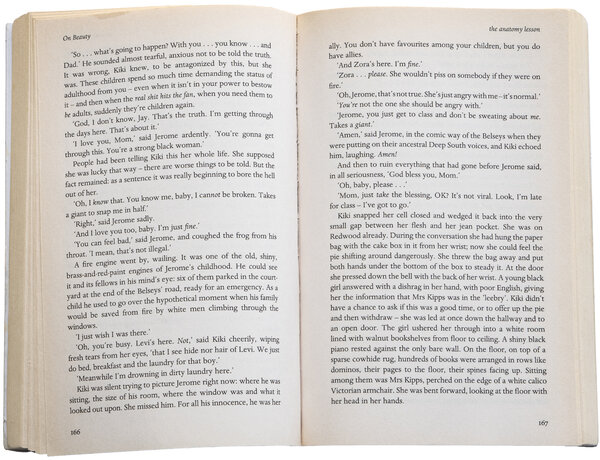
“You don’t have favorites among your children, but you do have allies.”
Let’s admit it: Family is often a kind of war, even if telepathically conducted. — Alexandra Jacobs, book critic for The Times
Liked it? Try “Crossroads,” by Jonathan Franzen.
Interested? Read our review. Then reserve it at your local library or buy it from Amazon, Apple, Barnes & Noble or Bookshop.

93
Station Eleven
Increasingly, and for obvious reasons, end-times novels are not hard to find. But few have conjured the strange luck of surviving an apocalypse — civilization preserved via the ad hoc Shakespeare of a traveling theater troupe; entire human ecosystems contained in an abandoned airport — with as much spooky melancholic beauty as Mandel does in her beguiling fourth novel.

Liked it? Try “Severance,” by Ling Ma or “The Passage,” by Justin Cronin.
Interested? Read our review. Then reserve it at your local library or buy it from Amazon, Apple, Barnes & Noble or Bookshop.
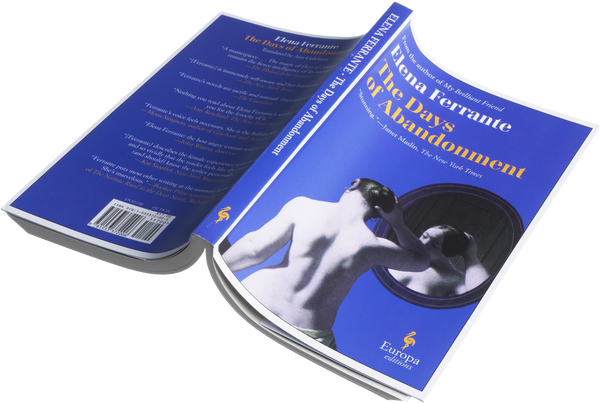
92
The Days of Abandonment
There is something scandalous about this picture of a sensible, adult woman almost deranged by the breakup of her marriage, to the point of neglecting her children. The psychodrama is naked — sometimes hard to read, at other moments approaching farce. Just as Ferrante drew an indelible portrait of female friendship in her quartet of Neapolitan novels, here, she brings her all-seeing eye to female solitude.

“The circle of an empty day is brutal, and at night it tightens around your neck like a noose.”
It so simply encapsulates how solitude can, with the inexorable passage of time, calcify into loneliness and then despair. — Alexandra Jacobs
Liked it? Try “Eileen,” by Ottessa Moshfegh or “Aftermath: On Marriage and Separation,” by Rachel Cusk.
Interested? Read our review. Then reserve it at your local library or buy it from Amazon, Apple, Barnes & Noble or Bookshop.
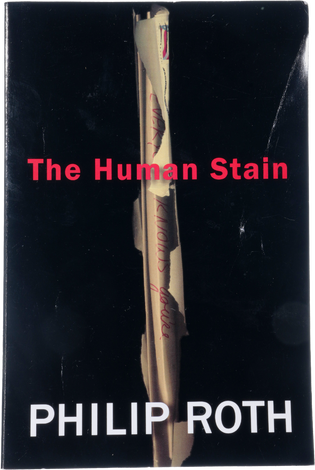
91
The Human Stain
Set during the Clinton impeachment imbroglio, this is partly a furious indictment of what would later be called cancel culture, partly an inquiry into the paradoxes of class, sex and race in America. A college professor named Coleman Silk is persecuted for making supposedly racist remarks in class. Nathan Zuckerman, his neighbor (and Roth’s trusty alter ego), learns that Silk, a fellow son of Newark, is a Black man who has spent most of his adult life passing for white. Of all the Zuckerman novels, this one may be the most incendiary, and the most unsettling. — A.O. Scott

Liked it? Try “Vladimir,” by Julia May Jonas or “Blue Angel,” by Francine Prose.
Interested? Read our review. Then reserve it at your local library or buy it from Amazon, Apple, Barnes & Noble or Bookshop.
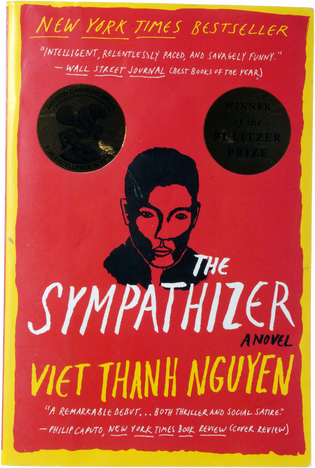
90
The Sympathizer
Penned as a book-length confession from a nameless North Vietnamese spy as Saigon falls and new duties in America beckon, Nguyen’s richly faceted novel seems to swallow multiple genres whole, like a satisfied python: political thriller and personal history, cracked metafiction and tar-black comedy.

Liked it? Try “Man of My Time,” by Dalia Sofer or “Tomás Nevinson,” by Javier Marías; translated by Margaret Jull Costa.
Interested? Read our review. Then reserve it at your local library or buy it from Amazon, Apple, Barnes & Noble or Bookshop.

89
The Return
Though its Pulitzer Prize was bestowed in the category of biography, Matar’s account of searching for the father he lost to a 1990 kidnapping in Cairo functions equally as absorbing detective story, personal elegy and acute portrait of doomed geopolitics — all merged, somehow, with the discipline and cinematic verve of a novel.
Liked it? Try “A Day in the Life of Abed Salama: Anatomy of a Jerusalem Tragedy,” by Nathan Thrall, “House of Stone: A Memoir of Home, Family, and a Lost Middle East,” by Anthony Shadid or “My Father’s Fortune,” by Michael Frayn.
Interested? Read our review. Then reserve it at your local library or buy it from Amazon, Apple, Barnes & Noble or Bookshop.

88
The Collected Stories
of Lydia Davis
Brevity, thy name is Lydia Davis. If her work has become a byword for short (nay, microdose) fiction, this collection proves why it is also hard to shake; a conflagration of odd little umami bombs — sometimes several pages, sometimes no more than a sentence — whose casual, almost careless wordsmithery defies their deadpan resonance.
Liked it? Try “Ninety-Nine Stories of God,” by Joy Williams or “Tell Me: Thirty Stories,” by Mary Robison.
Interested? Read our review. Then reserve it at your local library or buy it from Amazon, Apple, Barnes & Noble or Bookshop.
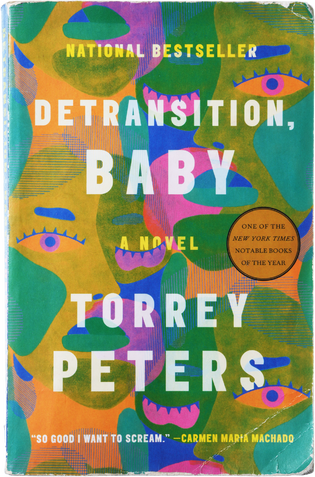
87
Detransition, Baby
Love is lost, found and reconfigured in Peters’s penetrating, darkly humorous debut novel. But when the novel’s messy triangular romance — between two trans characters and a cis-gendered woman — becomes an unlikely story about parenthood, the plot deepens, and so does its emotional resonance: a poignant and gratifyingly cleareyed portrait of found family.
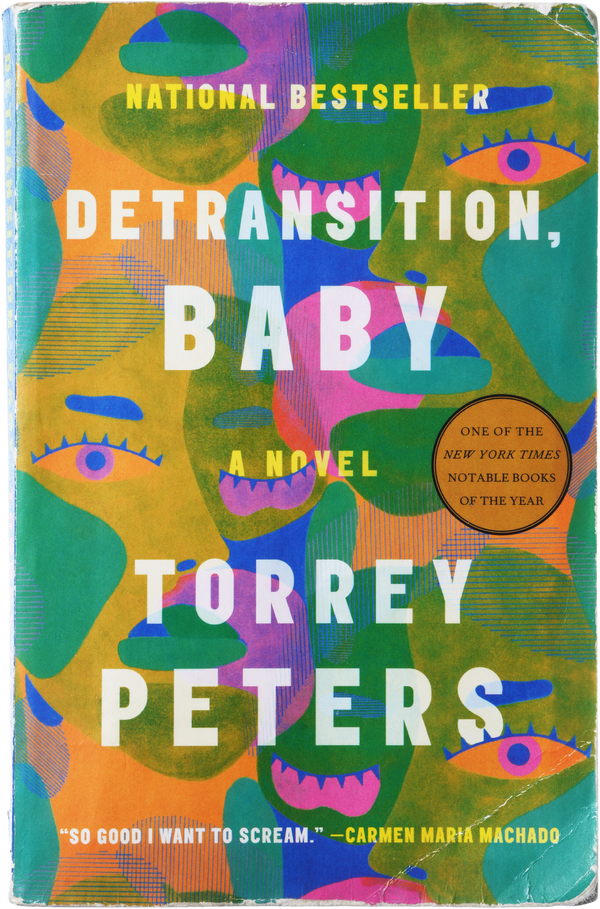
Peters’s sly wit and observational genius, her ability to balance so many intimate realities, cultural forces and zeitgeisty happenings made my head spin. It got me hot, cracked me up, punched my heart with grief and understanding. I’m in awe of her abilities, and will re-read this book periodically just to remember how it’s done. — Michelle Tea, author of “Against Memoir”
Liked it? Try “I Heard Her Call My Name: A Memoir of Transition,” by Lucy Sante or “Didn’t Nobody Give a Shit What Happened to Carlotta,” by James Hannaham.
Interested? Read our review. Then reserve it at your local library or buy it from Amazon, Apple, Barnes & Noble or Bookshop.

86
Frederick Douglass
It is not hard to throw a rock and hit a Great Man biography; Blight’s earns its stripes by smartly and judiciously excavating the flesh-and-bone man beneath the myth. Though Douglass famously wrote three autobiographies of his own, there turned out to be much between the lines that is illuminated here with rigor, flair and refreshing candor.

Liked it? Try “The Grimkes: The Legacy of Slavery in an American Family,” by Kerri K. Greenidge or “Freedom National: The Destruction of Slavery in the United States, 1861-1865,” by James Oakes.
Interested? Read our review. Then reserve it at your local library or buy it from Amazon, Apple, Barnes & Noble or Bookshop.

85
Pastoralia
An ersatz caveman languishes at a theme park; a dead maiden aunt comes back to screaming, scatological life; a bachelor barber born with no toes dreams of true love, or at least of getting his toe-nubs licked. The stories in Saunders’s second collection are profane, unsettling and patently absurd. They’re also freighted with bittersweet humanity, and rendered in language so strange and wonderful, it sings.

Liked it? Try “Swamplandia!,” by Karen Russell or “Friday Black,” by Nana Kwame Adjei-Brenyah.
Interested? Read our review. Then reserve it at your local library or buy it from Amazon, Apple, Barnes & Noble or Bookshop.

84
The Emperor of All Maladies
The subtitle, “A Biography of Cancer,” provides some helpful context for what lies between the covers of Mukherjee’s Pulitzer Prize-winning book, though it hardly conveys the extraordinary ambition and empathy of his telling, as the trained oncologist weaves together disparate strands of large-scale history, biology and devastating personal anecdote.

Liked it? Try “Being Mortal: Medicine and What Matters in the End,” by Atul Gawande, “Do No Harm: Stories of Life, Death, and Brain Surgery,” by Henry Marsh or “I Contain Multitudes: The Microbes Within Us and a Grander View of Life,” by Ed Yong.
Interested? Read our review. Then reserve it at your local library or buy it from Amazon, Apple, Barnes & Noble or Bookshop.

83
When We Cease to Understand the World
You don’t have to know anything about quantum theory to start reading this book, a deeply researched, exquisitely imagined group portrait of tormented geniuses. By the end, you’ll know enough to be terrified. Labatut is interested in how the pursuit of scientific certainty can lead to, or arise from, states of extreme psychological and spiritual upheaval. His characters — Niels Bohr, Werner Heisenberg and Erwin Schrödinger, among others — discover a universe that defies rational comprehension. After them, “scientific method and its object could no longer be prised apart.” That may sound abstract, but in Labatut’s hands the story of quantum physics is violent, suspenseful and finally heartbreaking. — A.O. Scott
Liked it? Try “The Rigor of Angels: Borges, Heisenberg, Kant, and the Ultimate Nature of Reality,” by William Egginton, “The Noise of Time,” by Julian Barnes or “The End of Days,” by Jenny Erpenbeck; translated by Susan Bernofsky.
Interested? Read our review. Then reserve it at your local library or buy it from Amazon, Apple, Barnes & Noble or Bookshop.
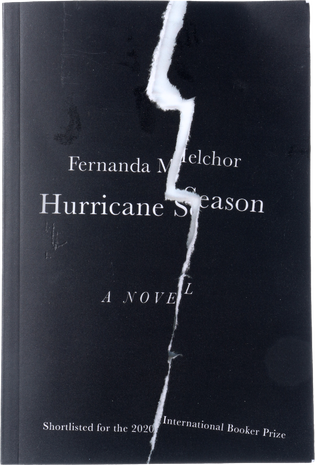
82
Hurricane Season
Her sentences are sloping hills; her paragraphs, whole mountains. It’s no wonder that Melchor was dubbed a sort of south-of-the-border Faulkner for her baroque and often brutally harrowing tale of poverty, paranoia and murder (also: witches, or at least the idea of them) in a fictional Mexican village. When a young girl impregnated by her pedophile stepfather unwittingly lands there, her arrival is the spark that lights a tinderbox.
Liked it? Try “Liliana’s Invincible Summer: A Sister’s Search for Justice,” by Cristina Rivera Garza or “Fever Dream,” by Samanta Schweblin; translated by Megan McDowell.
Interested? Read our review. Then reserve it at your local library or buy it from Amazon, Apple, Barnes & Noble or Bookshop.

81
Pulphead
When this book of essays came out, it bookended a fading genre: collected pieces written on deadline by “pulpheads,” or magazine writers. Whether it’s Sullivan’s visit to a Christian rock festival, his profile of Axl Rose or a tribute to an early American botanist, he brings to his subjects not just depth, but an open-hearted curiosity. Indeed, if this book feels as if it’s from a different time, perhaps that’s because of its generous receptivity to other ways of being, which offers both reader and subject a kind of grace.
Liked it? Try “Sunshine State,” by Sarah Gerard, “Consider the Lobster,” by David Foster Wallace or “Yoga for People Who Can’t Be Bothered to Do It,” by Geoff Dyer.
Interested? Read our review. Then reserve it at your local library or buy it from Amazon, Apple, Barnes & Noble or Bookshop.

80
The Story of the Lost Child
All things, even modern literature’s most fraught female friendship, must come to an end. As the now middle-aged Elena and Lila continue the dance of envy and devotion forged in their scrappy Neapolitan youth, the conclusion of Ferrante’s four-book saga defies the laws of diminishing returns, illuminating the twined psychologies of its central pair — intractable, indelible, inseparable — in one last blast of X-ray prose.

Liked it? Try “The Years That Followed,” by Catherine Dunne or “From the Land of the Moon,” by Milena Agus; translated by Ann Goldstein.
Interested? Read our review. Then reserve it at your local library or buy it from Amazon, Apple, Barnes & Noble or Bookshop.

79
A Manual for
Cleaning Women
Berlin began writing in the 1960s, and collections of her careworn, haunted, messily alluring yet casually droll short stories were published in the 1980s and ’90s. But it wasn’t until 2015, when the best were collected into a volume called “A Manual for Cleaning Women,” that her prodigious talent was recognized. Berlin writes about harried and divorced single women, many of them in working-class jobs, with uncanny grace. She is the real deal. — Dwight Garner, book critic for The Times

“I hate to see anything lovely by myself.”
It’s so true, to me at least, and I have heard no other writer express it. — Dwight Garner
Liked it? Try “The Flamethrowers,” by Rachel Kushner or “The Complete Stories,” by Clarice Lispector; translated by Katrina Dodson.
Interested? Read our review. Then reserve it at your local library or buy it from Amazon, Apple, Barnes & Noble or Bookshop.

78
Septology
You may not be champing at the bit to read a seven-part, nearly 700-page novel written in a single stream-of-consciousness sentence with few paragraph breaks and two central characters with the same name. But this Norwegian masterpiece, by the winner of the 2023 Nobel Prize in Literature, is the kind of soul-cleansing work that seems to silence the cacophony of the modern world — a pair of noise-canceling headphones in book form. The narrator, a painter named Asle, drives out to visit his doppelgänger, Asle, an ailing alcoholic. Then the narrator takes a boat ride to have Christmas dinner with some friends. That, more or less, is the plot. But throughout, Fosse’s searching reflections on God, art and death are at once haunting and deeply comforting.

I had not read Fosse before he won the Nobel Prize, and I wanted to catch up. Luckily for me, the critic Merve Emre (who has championed his work) is my colleague at Wesleyan, so I asked her where to start. I was hoping for a shortcut, but she sternly told me that there was nothing to do but to read the seven-volume “Septology” translated by Damion Searls. Luckily for me, I had 30 hours of plane travel in the next week or so, and I had a Kindle.
Reading “Septology” in the cocoon of a plane was one of the great aesthetic experiences of my life. The hypnotic effects of the book were amplified by my confinement, and the paucity of distractions helped me settle into its exquisite rhythms. The repetitive patterns of Fosse’s prose made its emotional waves, when they came, so much more powerful. — Michael Roth, president of Wesleyan University
Liked it? Try “Armand V,” by Dag Solstad; translated by Steven T. Murray.
Interested? Read our review. Then reserve it at your local library or buy it from Amazon, Apple, Barnes & Noble or Bookshop.

77
An American Marriage
Life changes in an instant for Celestial and Roy, the young Black newlyweds at the beating, uncomfortably realistic heart of Jones’s fourth novel. On a mostly ordinary night, during a hotel stay near his Louisiana hometown, Roy is accused of rape. He is then swiftly and wrongfully convicted and sentenced to 12 years in prison. The couple’s complicated future unfolds, often in letters, across two worlds. The stain of racism covers both places.

Liked it? Try “Hello Beautiful,” by Ann Napolitano or “Stay with Me,” by Ayọ̀bámi Adébáyọ̀.
Interested? Read our review. Then reserve it at your local library or buy it from Amazon, Apple, Barnes & Noble or Bookshop.

76
Tomorrow, and Tomorrow, and Tomorrow
The title is Shakespeare; the terrain, more or less, is video games. Neither of those bare facts telegraphs the emotional and narrative breadth of Zevin’s breakout novel, her fifth for adults. As the childhood friendship between two future game-makers blooms into a rich creative collaboration and, later, alienation, the book becomes a dazzling disquisition on art, ambition and the endurance of platonic love.
Liked it? Try “Normal People,” by Sally Rooney or “Super Sad True Love Story,” by Gary Shteyngart.
Interested? Read our review. Then reserve it at your local library or buy it from Amazon, Apple, Barnes & Noble or Bookshop.

75
Exit West
The modern world and all its issues can feel heavy — too heavy for the fancies of fiction. Hamid’s quietly luminous novel, about a pair of lovers in a war-ravaged Middle Eastern country who find that certain doors can open portals, literally, to other lands, works in a kind of minor-key magical realism that bears its weight beautifully.

Liked it? Try “The Seven Moons of Maali Almeida,” by Shehan Karunatilaka or “A Burning,” by Megha Majumdar.
Interested? Read our review. Then reserve it at your local library or buy it from Amazon, Apple, Barnes & Noble or Bookshop.
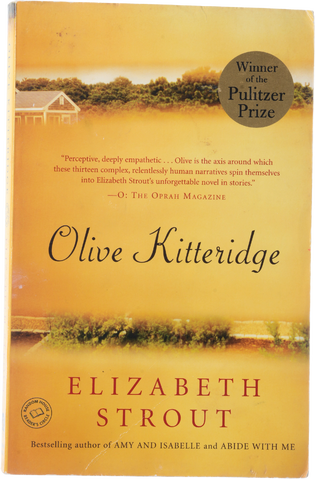
74
Olive Kitteridge
When this novel-in-stories won the Pulitzer Prize for fiction in 2009, it was a victory for crotchety, unapologetic women everywhere, especially ones who weren’t, as Olive herself might have put it, spring chickens. The patron saint of plain-spokenness — and the titular character of Strout’s 13 tales — is a long-married Mainer with regrets, hopes and a lobster boat’s worth of quiet empathy. Her small-town travails instantly became stand-ins for something much bigger, even universal.

Liked it? Try “Tom Lake,” by Ann Patchett or “Hateship, Friendship, Courtship, Loveship, Marriage,” by Alice Munro.
Interested? Read our review. Then reserve it at your local library or buy it from Amazon, Apple, Barnes & Noble or Bookshop.

73
The Passage of Power
The fourth volume of Caro’s epic chronicle of Lyndon Johnson’s life and times is a political biography elevated to the level of great literature. His L.B.J. is a figure of Shakespearean magnitude, whose sudden ascension from the abject humiliations of the vice presidency to the summit of political power is a turn of fortune worthy of a Greek myth. Caro makes you feel the shock of J.F.K.’s assassination, and brings you inside Johnson’s head on the blood-drenched day when his lifelong dream finally comes true. It’s an astonishing and unforgettable book. — Tom Perrotta, author of “The Leftovers”
Liked it? Try “G-Man: J. Edgar Hoover and the Making of the American Century,” by Beverly Gage, “King: A Life,” by Jonathan Eig or “American Prometheus: The Triumph and Tragedy of J. Robert Oppenheimer,” by Kai Bird and Martin J. Sherwin.
Interested? Read our review. Then reserve it at your local library or buy it from Amazon, Apple, Barnes & Noble or Bookshop.

72
Secondhand Time
Of all the 20th century’s grand failed experiments, few came to more inglorious ends than the aspiring empire known, for a scant seven decades, as the U.S.S.R. The death of the dream of Communism reverberates through the Nobel-winning Alexievich’s oral history, and her unflinching portrait of the people who survived the Soviet state (or didn’t) — ex-prisoners, Communist Party officials, ordinary citizens of all stripes — makes for an excoriating, eye-opening read.
Liked it? Try “Gulag,” by Anne Applebaum or “Is Journalism Worth Dying For? Final Dispatches,” by Anna Politkovskaya; translated by Arch Tait.
Interested? Read our review. Then reserve it at your local library or buy it from Amazon, Apple, Barnes & Noble or Bookshop.

71
The Copenhagen Trilogy
Ditlevsen’s memoirs were first published in Denmark in the 1960s and ’70s, but most English-language readers didn’t encounter them until they appeared in a single translated volume more than five decades later. The books detail Ditlevsen’s hardscrabble childhood, her flourishing early career as a poet and her catastrophic addictions, which left her wedded to a psychotic doctor and hopelessly dependent on opioids by her 30s. But her writing, however dire her circumstances, projects a breathtaking clarity and candidness, and it nails what is so inexplicable about human nature.
Liked it? Try “The End of Eddy,” by Édouard Louis; translated by Michael Lucey.
Interested? Read our review. Then reserve it at your local library or buy it from Amazon, Apple, Barnes & Noble or Bookshop.

70
All Aunt Hagar’s Children
Jones’s follow-up to his Pulitzer-anointed historical novel, “The Known World,” forsakes a single narrative for 14 interconnected stories, disparate in both direction and tone. His tales of 20th-century Black life in and around Washington, D.C., are haunted by cumulative loss and touched, at times, by dark magical realism — one character meets the Devil himself in a Safeway parking lot — but girded too by loveliness, and something like hope.

“It was, I later learned about myself, as if my heart, on the path that was my life, had come to a puddle in the road and had faltered, hesitated, trying to decide whether to walk over the puddle or around it, or even to go back.”
The metaphor is right at the edge of corniness, but it's rendered with such specificity that it catches you off guard, and the temporal complexity — the way the perspective moves forward, backward and sideways in time — captures an essential truth about memory and regret. — A.O. Scott
Liked it? Try “The Office of Historical Corrections,” by Danielle Evans or “Perish,” by LaToya Watkins.
Interested? Read our review. Then reserve it at your local library or buy it from Amazon, Apple, Barnes & Noble or Bookshop.

69
The New Jim Crow
One year into Barack Obama’s first presidential term, Alexander, a civil rights attorney and former Supreme Court clerk, peeled back the hopey-changey scrim of early-aughts America to reveal the systematic legal prejudice that still endures in a country whose biggest lie might be “with liberty and justice for all.” In doing so, her book managed to do what the most urgent nonfiction aims for but rarely achieves: change hearts, minds and even public policy.
Liked it? Try “Locking Up Our Own: Crime and Punishment in Black America,” by James Forman Jr., “America on Fire: The Untold History of Police Violence and Black Rebellion Since the 1960s,” by Elizabeth Hinton or “Caste: The Origins of Our Discontent,” by Isabel Wilkerson.
Interested? Reserve it at your local library or buy it from Amazon, Apple, Barnes & Noble or Bookshop.
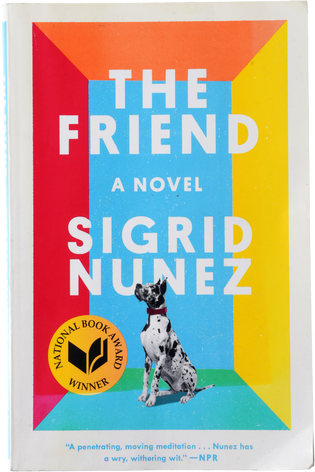
68
The Friend
After suffering the loss of an old friend and adopting his Great Dane, the book’s heroine muses on death, friendship, and the gifts and burdens of a literary life. Out of these fragments a philosophy of grief springs like a rabbit out of a hat; Nunez is a magician. — Ada Calhoun, author of “Also a Poet: Frank O’Hara, My Father, and Me”

“The Friend” is a perfect novel about the size of grief and love, and like the dog at the book’s center, the book takes up more space than you expect. It’s my favorite kind of masterpiece — one you can put into anyone’s hand. — Emma Straub, author of “This Time Tomorrow”
Liked it? Try “Autumn,” by Ali Smith or “Stay True: A Memoir,” by Hua Hsu.
Interested? Read our review. Then reserve it at your local library or buy it from Amazon, Apple, Barnes & Noble or Bookshop.

67
Far From the Tree
In this extraordinary book — a combination of masterly reporting and vivid storytelling — Solomon examines the experience of parents raising exceptional children. I have often returned to it over the years, reading it for its depth of understanding and its illumination of the particulars that make up the fabric of family. — Meg Wolitzer, author of “The Interestings”

Liked it? Try “Strangers to Ourselves: Unsettled Minds and the Stories That Make Us,” by Rachel Aviv or “NeuroTribes: The Legacy of Autism and the Future of Neurodiversity,” by Steven Silberman.
Interested? Read our review. Then reserve it at your local library or buy it from Amazon, Apple, Barnes & Noble or Bookshop.

66
We the Animals
The hummingbird weight of this novella — it barely tops 130 pages — belies the cherry-bomb impact of its prose. Tracing the coming-of-age of three mixed-race brothers in a derelict upstate New York town, Torres writes in the incantatory royal we of a sort of sibling wolfpack, each boy buffeted by their parents’ obscure grown-up traumas and their own enduring (if not quite unshakable) bonds.
Liked it? Try “Shuggie Bain,” by Douglas Stuart, “Fire Shut Up in My Bones,” by Charles Blow or “On Earth We’re Briefly Gorgeous,” by Ocean Vuong.
Interested? Read our review. Then reserve it at your local library or buy it from Amazon, Apple, Barnes & Noble or Bookshop.

65
The Plot Against America
What if, in the 1940 presidential election, Charles Lindbergh — aviation hero, America-firster and Nazi sympathizer — had defeated Franklin Roosevelt? Specifically, what would have happened to Philip Roth, the younger son of a middle-class Jewish family in Newark, N.J.? From those counterfactual questions, the adult Roth spun a tour de force of memory and history. Ever since the 2016 election his imaginary American past has pulled closer and closer to present-day reality. — A.O. Scott

Liked it? Try “Biography of X,” by Catherine Lacey or “The Netanyahus: An Account of a Minor and Ultimately Even Negligible Episode in the History of a Very Famous Family,” by Joshua Cohen.
Interested? Read our review. Then reserve it at your local library or buy it from Amazon, Apple, Barnes & Noble or Bookshop.

64
The Great Believers
It’s mid-1980s Chicago, and young men — beautiful, recalcitrant boys, full of promise and pure life force — are dying, felled by a strange virus. Makkai’s recounting of a circle of friends who die one by one, interspersed with a circa-2015 Parisian subplot, is indubitably an AIDS story, but one that skirts po-faced solemnity and cliché at nearly every turn: a bighearted, deeply generous book whose resonance echoes across decades of loss and liberation.
Liked it? Try “The Interestings,” by Meg Wolitzer, “A Little Life,” by Hanya Yanagihara or “The Emperor’s Children,” by Claire Messud.
Interested? Read our review. Then reserve it at your local library or buy it from Amazon, Apple, Barnes & Noble or Bookshop.

63
Veronica
Set primarily in a 1980s New York crackling with brittle glamour and real menace, “Veronica” is, on the face of it, the story of two very different women — the fragile former model Alison and the older, harder Veronica, fueled by fury and frustrated intelligence. It's a fearless, lacerating book, scornful of pieties and with innate respect for the reader’s intelligence and adult judgment.

Liked it? Try “The Quick and the Dead,” by Joy Williams, “Look at Me,” by Jennifer Egan or “Lightning Field,” by Dana Spiotta.
Interested? Read our review. Then reserve it at your local library or buy it from Amazon, Apple, Barnes & Noble or Bookshop.

62
10:04
How closely does Ben Lerner, the very clever author of “10:04,” overlap with its unnamed narrator, himself a poet-novelist who bears a remarkable resemblance to the man pictured on its biography page? Definitive answers are scant in this metaphysical turducken of a novel, which is nominally about the attempts of a Brooklyn author, burdened with a hefty publishing advance, to finish his second book. But the delights of Lerner’s shimmering self-reflexive prose, lightly dusted with photographs and illustrations, are endless.
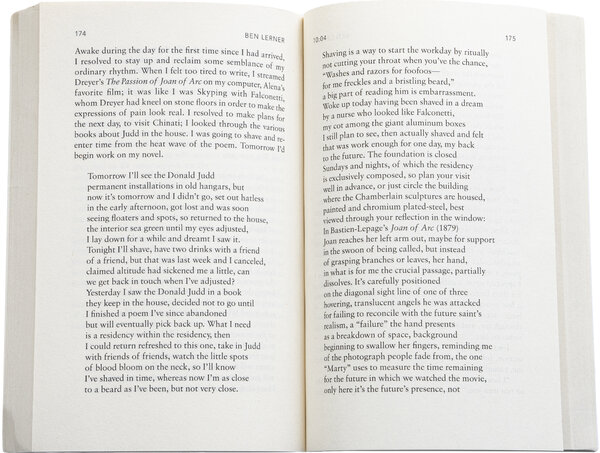
“Shaving is a way to start the workday by ritually not cutting your throat when you’ve the chance.”
“10:04” is filled with sentences that cut this close to the bone. Comedy blends with intimations of the darkest aspects of our natures, and of everyday life. Who can shave anymore without recalling this “Sweeney Todd”-like observation? — Dwight Garner
Liked it? Try “The Love Affairs of Nathaniel P.,” by Adelle Waldman, “Open City,” by Teju Cole or “How Should a Person Be?,” by Sheila Heti.
Interested? Read our review. Then reserve it at your local library or buy it from Amazon, Apple, Barnes & Noble or Bookshop.

61
Demon Copperhead
In transplanting “David Copperfield” from Victorian England to modern-day Appalachia, Kingsolver gives the old Dickensian magic her own spin. She reminds us that a novel can be wildly entertaining — funny, profane, sentimental, suspenseful — and still have a social conscience. And also that the injustices Dickens railed against are still very much with us: old poison in new bottles. — A.O. Scott

Liked it? Try “James,” by Percival Everett or “The Heaven & Earth Grocery Store,” by James McBride.
Interested? Read our review. Then reserve it at your local library or buy it from Amazon, Apple, Barnes & Noble or Bookshop.

60
Heavy
What is the psychic weight of secrets and lies? In his unvarnished memoir, Laymon explores the cumulative mass of a past that has brought him to this point: his Blackness; his fraught relationship to food; his family, riven by loss and addiction and, in his mother’s case, a kind of pathological perfectionism. What emerges is a work of raw emotional power and fierce poetry.

Liked it? Try “Men We Reaped,” by Jesmyn Ward or “Another Word for Love,” by Carvell Wallace.
Interested? Read our review. Then reserve it at your local library or buy it from Amazon, Apple, Barnes & Noble or Bookshop.

59
Middlesex
Years before pronouns became the stuff of dinner-table debates and email signatures, “Middlesex” offered the singular gift of an intersex hero — “sing now, O Muse, of the recessive mutation on my fifth chromosome!” — whose otherwise fairly ordinary Midwestern life becomes a radiant lens on recent history, from the burning of Smyrna to the plush suburbia of midcentury Grosse Pointe, Mich. When the teenage Calliope, born to doting Greek American parents, learns that she is not in fact a budding young lesbian but biologically male, it’s less science than assiduously buried family secrets that tell the improbable, remarkable tale.

Liked it? Try “The Nix,” by Nathan Hill, “The Heart’s Invisible Furies,” by John Boyne or “The Signature of All Things,” by Elizabeth Gilbert.
Interested? Read our review. Then reserve it at your local library or buy it from Amazon, Apple, Barnes & Noble or Bookshop.
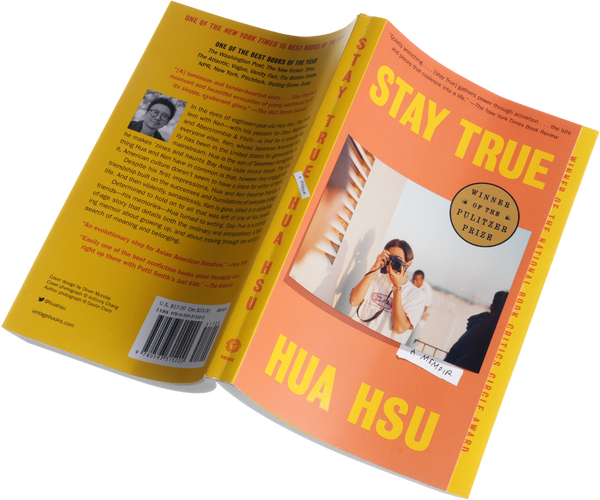
58
Stay True
An unlikely college friendship — Ken loves preppy polo shirts and Pearl Jam, Hua prefers Xeroxed zines and Pavement — blossoms in 1990s Berkeley, then is abruptly fissured by Ken’s murder in a random carjacking. Around those bare facts, Hsu’s understated memoir builds a glimmering fortress of memory in which youth and identity live alongside terrible, senseless loss.

Liked it? Try “Truth & Beauty: A Friendship,” by Ann Patchett, “The Best Minds: A Story of Friendship, Madness, and the Tragedy of Good Intentions,” by Jonathan Rosen or “Just Kids,” by Patti Smith.
Interested? Read our review. Then reserve it at your local library or buy it from Amazon, Apple, Barnes & Noble or Bookshop.

57
Nickel and Dimed
Waitress, hotel maid, cleaning woman, retail clerk: Ehrenreich didn’t just report on these low-wage jobs; she actually worked them, trying to construct a life around merciless managers and wildly unpredictable schedules, while also getting paid a pittance for it. Through it all, Ehrenreich combined a profound sense of moral outrage with self-deprecating candor and bone-dry wit. — Jennifer Szalai, nonfiction book critic for The Times

Liked it? Try “Poverty, by America,” by Matthew Desmond or “The Working Poor: Invisible in America,” by David K. Shipler.
Interested? Read our review. Then reserve it at your local library or buy it from Amazon, Apple, Barnes & Noble or Bookshop.
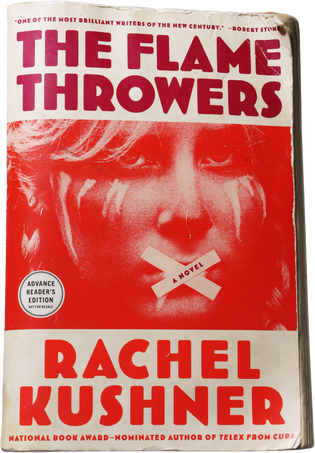
56
The Flamethrowers
Motorcycle racing across the arid salt flats of Utah; art-star posturing in the downtown demimonde of 1970s New York; anarchist punk collectives and dappled villas in Italy: It’s all connected (if hardly contained) in Kushner’s brash, elastic chronicle of a would-be artist nicknamed Reno whose lust for experience often outstrips both sense and sentiment. The book’s ambitions rise to meet her, a churning bedazzlement of a novel whose unruly engine thrums and roars.
Liked it? Try “City on Fire,” by Garth Risk Hallberg or “The Girls,” by Emma Cline.
Interested? Read our review. Then reserve it at your local library or buy it from Amazon, Apple, Barnes & Noble or Bookshop.
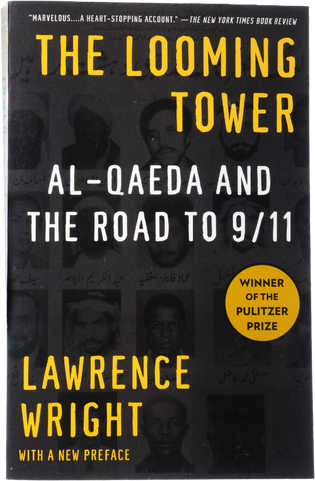
55
The Looming Tower
What happened in New York City one incongruously sunny morning in September was never, of course, the product of some spontaneous plan. Wright’s meticulous history operates as a sort of panopticon on the events leading up to that fateful day, spanning more than five decades and a geopolitical guest list that includes everyone from the counterterrorism chief of the F.B.I. to the anonymous foot soldiers of Al Qaeda.
Liked it? Try “Ghost Wars: The Secret History of the CIA, Afghanistan, and Bin Laden, from the Soviet Invasion to September 10, 2001,” by Steve Coll or “MBS: The Rise to Power of Mohammed bin Salman,” by Ben Hubbard.
Interested? Read our review. Then reserve it at your local library or buy it from Amazon, Apple, Barnes & Noble or Bookshop.

54
Tenth of December
For all of their linguistic invention and anarchic glee, Saunders’s stories are held together by a strict understanding of the form and its requirements. Take plot: In “Tenth of December,” his fourth and best collection, readers will encounter an abduction, a rape, a chemically induced suicide, the suppressed rage of a milquetoast or two, a veteran’s post-traumatic impulse to burn down his mother’s house — all of it buffeted by gusts of such merriment and tender regard and daffy good cheer that you realize only in retrospect how dark these morality tales really are.

Nobody writes like George Saunders. He has cultivated a genuinely original voice, one that is hilarious and profound, tender and monstrous, otherworldly and deeply familiar, much like the American psyche itself. With each of these stories, you feel in the hands of a master — because you are. — Matthew Desmond, author of “Evicted: Poverty and Profit in the American City”
Liked it? Try “Delicate Edible Birds: And Other Stories,” by Lauren Groff, “Oblivion: Stories,” by David Foster Wallace or “The Nimrod Flipout: Stories,” by Etgar Keret, translated by Miriam Shlesinger and Sondra Silverston.
Interested? Read our review. Then reserve it at your local library or buy it from Amazon, Apple, Barnes & Noble or Bookshop.

53
Runaway
On one level, the title of Munro’s 11th short-story collection refers to a pet goat that goes missing from its owners’ property; but — this being Munro — the deeper reference is to an unhappy wife in the same story, who dreams of leaving her husband someday. Munro’s stories are like that, with shadow meanings and resonant echoes, as if she has struck a chime and set the reverberations down in writing.

Liked it? Try “Homesickness,” by Colin Barrett or “The Collected Stories of Lorrie Moore.”
Interested? Read our review. Then reserve it at your local library or buy it from Amazon, Apple, Barnes & Noble or Bookshop.

52
Train Dreams
Call it a backwoods tragedy, stripped to the bone, or a spare requiem for the American West: Johnson’s lean but potent novella carves its narrative from the forests and dust-bowl valleys of Spokane in the early decades of the 20th century, following a day laborer named Robert Grainier as he processes the sudden loss of his young family and bears witness to the real-time formation of a raw, insatiable nation.

Liked it? Try “That Old Ace in the Hole,” by Annie Proulx or “Night Boat to Tangier,” by Kevin Barry.
Interested? Read our review. Then reserve it at your local library or buy it from Amazon, Apple, Barnes & Noble or Bookshop.

51
Life After Life
Can we get life “right”? Are there choices that would lead, finally, to justice or happiness or save us from pain? Atkinson wrestles with these questions in her brilliant “Life After Life” — a historical novel, a speculative novel, a tale of time travel, a moving portrait of life before, during and in the aftermath of war. It gobbles up genres and blends them together until they become a single, seamless work of art. I love this goddamn book. — Victor LaValle, author of “Lone Women”

“‘Fox Corner — that’s what we should call the house. No one else has a house with that name and shouldn’t that be the point?’
‘Really?’ Hugh said doubtfully. ‘It’s a little whimsical, isn’t it? It sounds like a children’s story. The House at Fox Corner.’
‘A little whimsy never hurt anyone.’
‘Strictly speaking, though,’ Hugh said, ‘can a house be a corner? Isn’t it at one?’
So this is marriage, Sylvie thought.”
“Her brilliant ear. Her humor. Her openness. Her peculiar gifts. Some of her books are perfect. The rest are merely superb.” — Amy Bloom, writer
Liked it? Try “Light Perpetual,” by Francis Spufford or “Neverhome,” by Laird Hunt.
Interested? Read our review. Then reserve it at your local library or buy it from Amazon, Apple, Barnes & Noble or Bookshop.

50
Trust
How many ways can you tell the same story? Which one is true? These questions and their ethical implications hover over Diaz’s second novel. It starts out as a tale of wealth and power in 1920s New York — something Theodore Dreiser or Edith Wharton might have taken up — and leaps forward in time, across the boroughs and down the social ladder, breathing new vitality into the weary tropes of historical fiction. — A.O. Scott
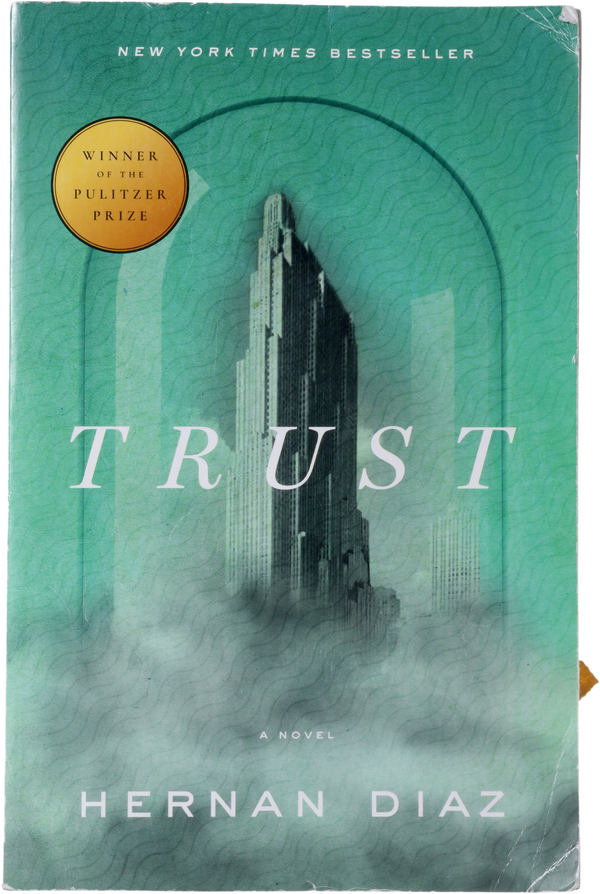
Be prepared for some serious mind games! Set in New York City in the 1920s and ’30s, the story of a Manhattan financier and his high-society wife is told through four “books” — a novel, a manuscript, a memoir and a journal. But which version should you trust? Is there even one true reality?
As we sift our way through these competing narratives, Diaz serves us clues and red herrings in equal measure. We know we are being gamed, but we’re not sure exactly which character is gaming us. While each reader will draw their own conclusion when they reach the end of this complex and thrilling book, what is never disputed is the ease with which money and power can bend reality itself. — Dua Lipa, singer and songwriter behind the Service95 Book Club
Liked it? Try “This Strange Eventful History,” by Claire Messud or “The Luminaries,” by Eleanor Catton.
Interested? Read our review. Then reserve it at your local library or buy it from Amazon, Apple, Barnes & Noble or Bookshop.

49
The Vegetarian
One ordinary day, a young housewife in contemporary Seoul wakes up from a disturbing dream and simply decides to … stop eating meat. As her small rebellion spirals, Han’s lean, feverish novel becomes a surreal meditation on not just what the body needs, but what a soul demands.

“I want to swallow you, have you melt into me and flow through my veins.”
“The Vegetarian” is a short novel with a mysterious, otherworldly air. It feels haunted, oppressive … It’s a story about hungers and starvation and desire, and how these become intertwined.” — Silvia Moreno-Garcia, author of “Mexican Gothic”
Liked it? Try “My Year of Rest and Relaxation,” by Ottessa Moshfegh or “Convenience Store Woman,” by Sayaka Murata; translated by Ginny Tapley Takemori.
Interested? Read our review. Then reserve it at your local library or buy it from Amazon, Apple, Barnes & Noble or Bookshop.
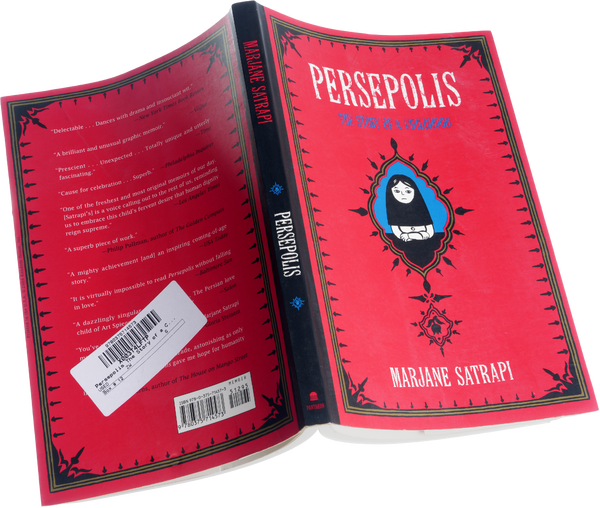
48
Persepolis
Drawn in stark black-and-white panels, Satrapi’s graphic novel is a moving account of her early life in Iran during the Islamic Revolution and her formative years abroad in Europe. The first of its two parts details the impacts of war and theocracy on both her family and her community: torture, death on the battlefield, constant raids, supply shortages and a growing black market. Part 2 chronicles her rebellious, traumatic years as a teenager in Vienna, as well as her return to a depressingly restrictive Tehran. Devastating — but also formally inventive, inspiring and often funny — “Persepolis” is a model of visual storytelling and personal narrative.
Liked it? Try “Martyr!,” by Kaveh Akbar or “Disoriental,” by Négar Djavadi; translated by Tina Kover.
Interested? Read our review. Then reserve it at your local library or buy it from Amazon, Barnes & Noble or Bookshop.
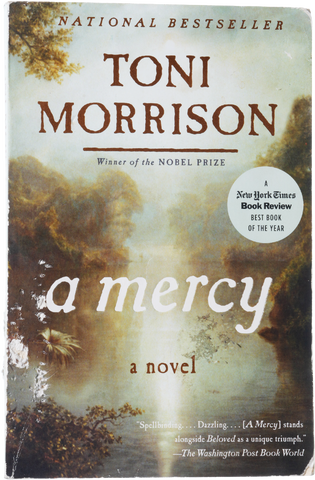
47
A Mercy
Mercies are few and far between in Morrison’s ninth novel, set on the remote colonial land of a 17th-century farmer amid his various slaves and indentured servants (even the acquisition of a wife, imported from England, is strictly transactional). Disease runs rampant and children die needlessly; inequity is everywhere. And yet! The Morrison magic, towering and magisterial, endures.

Liked it? Try “Year of Wonders,” by Geraldine Brooks or “The Love Songs of W.E.B. Du Bois,” by Honorée Fanonne Jeffers.
Interested? Read our review. Then reserve it at your local library or buy it from Amazon, Apple, Barnes & Noble or Bookshop.

46
The Goldfinch
For a time, it seemed as if Tartt’s vaunted 1992 debut, “The Secret History,” might be her only legacy, a once-in-a-career comet zinging across the literary sky. Then, more than a decade after the coolish reception to her 2002 follow-up, “The Little Friend,” came “The Goldfinch” — a coming-of-age novel as narratively rich and riveting as the little bird in the Dutch painting it takes its title from is small and humble. That 13-year-old Theo Decker survives the museum bombing that kills his mother is a minor miracle; the tiny, priceless souvenir he inadvertently grabs from the rubble becomes both a talisman and an albatross in this heady, haunted symphony of a novel.

Liked it? Try “Freedom,” by Jonathan Franzen or “Demon Copperhead,” by Barbara Kingsolver.
Interested? Read our review. Then reserve it at your local library or buy it from Amazon, Apple, Barnes & Noble or Bookshop.

45
The Argonauts
Call it a memoir if you must, but this is a book about the necessity — and also the thrill, the terror, the risk and reward — of defying categories. Nelson is a poet and critic, well versed in pop culture and cultural theory. The text she interprets here is her own body. An account of her pregnancy, her relationship with the artist Harry Dodge and the early stages of motherhood, “The Argonauts” explores queer identity, gender politics and the meaning of family. What makes Nelson such a valuable writer is her willingness to follow the sometimes contradictory rhythms of her own thinking in prose that is sharp, supple and disarmingly heartfelt. — A.O. Scott

Liked it? Try “My 1980s and Other Essays,” by Wayne Koestenbaum, “No One Is Talking About This,” by Patricia Lockwood or “On Immunity,” by Eula Biss.
Interested? Read our review. Then reserve it at your local library or buy it from Amazon, Apple, Barnes & Noble or Bookshop.

44
The Fifth Season
“The Fifth Season” weaves its story in polyphonic voice, utilizing a clever story structure to move deftly through generational time. Jemisin delivers this bit of high craft in a fresh, unstuffy voice — something rare in high fantasy, which can take its Tolkien roots too seriously. From its heartbreaking opening (a mother’s murdered child) to its shattering conclusion, Jemisin shows the power of what good fantasy fiction can do. “The Fifth Season” explores loss, grief and personhood on an intimate level. But it also takes on themes of discrimination, human breeding and ecological collapse with an unflinching eye and a particular nuance. Jemisin weaves a world both horrifyingly familiar and unsettlingly alien. — Rebecca Roanhorse, author of “Mirrored Heavens”

Liked it? Try “American War,” by Omar El Akkad or “The Year of the Flood,” by Margaret Atwood.
Interested? Read our review. Then reserve it at your local library or buy it from Amazon, Apple, Barnes & Noble or Bookshop.

43
Postwar
By the time this book was published in 2005, there had already been innumerable volumes covering Europe’s history since the end of World War II. Yet none of them were quite like Judt’s: commanding and capacious, yet also attentive to those stubborn details that are so resistant to abstract theories and seductive myths. The writing, like the thinking, is clear, direct and vivid. And even as Judt was ruthless when reflecting on Europe’s past, he maintained a sense of contingency throughout, never succumbing to the comfortable certainty of despair. — Jennifer Szalai

Liked it? Try “We Don’t Know Ourselves: A Personal History of Ireland,” by Fintan O’Toole, “Bloodlands: Europe Between Hitler and Stalin,” by Timothy D. Snyder or “To End All Wars: A Story of Loyalty and Rebellion, 1914-1918,” by Adam Hochschild.
Interested? Read our review. Then reserve it at your local library or buy it from Amazon, Apple, Barnes & Noble or Bookshop.

42
A Brief History
of Seven Killings
“Brief”? For a work spanning nearly 700 pages, that word is, at best, a winky misdirection. To skip even a paragraph, though, would be to forgo the vertiginous pleasures of James’s semi-historical novel, in which the attempted assassination of an unnamed reggae superstar who strongly resembles Bob Marley collides with C.I.A. conspiracy, international drug cartels and the vibrant, violent Technicolor of post-independence Jamaica.
Liked it? Try “Telex From Cuba,” by Rachel Kushner or “Brief Encounters With Che Guevara,” by Ben Fountain.
Interested? Read our review. Then reserve it at your local library or buy it from Amazon, Apple, Barnes & Noble or Bookshop.

41
Small Things Like These
Not a word is wasted in Keegan’s small, burnished gem of a novel, a sort of Dickensian miniature centered on the son of an unwed mother who has grown up to become a respectable coal and timber merchant with a family of his own in 1985 Ireland. Moralistically, though, it might as well be the Middle Ages as he reckons with the ongoing sins of the Catholic Church and the everyday tragedies wrought by repression, fear and rank hypocrisy.

This is the book I would like to have written because its sentences portray a life — in all its silences, subtleties and defenses — that I would hope to live if its circumstances were mine. It’s never idle, I guess, to be asked what we would give up for another. — Claudia Rankine, author of “Citizen”
Liked it? Try “The Rachel Incident,” by Caroline O’Donoghue or “Mothers and Sons,” by Colm Tóibín.
Interested? Read our review. Then reserve it at your local library or buy it from Amazon, Apple, Barnes & Noble or Bookshop.

40
H Is for Hawk
I read “H Is for Hawk” when I was writing my own memoir, and it awakened me to the power of the genre. It is a book supposedly about training a hawk named Mabel but really about wonder and loss, discovery and death. We discover a thing, then we lose it. The discovering and the losing are two halves of the same whole. Macdonald knows this and she shows us, weaving the loss of her father through the partial taming (and taming is always partial) of this hawk. — Tara Westover, author of “Educated”

“There is a time in life when you expect the world to be always full of new things. And then comes a day when you realize that is not how it will be at all. You see that life will become a thing made of holes. Absences. Losses. Things that were there and are no longer.”
Chosen by Tara Westover.
Liked it? Try “The Friend,” by Sigrid Nunez or “Braiding Sweetgrass,” by Robin Wall Kimmerer.
Interested? Read our review. Then reserve it at your local library or buy it from Amazon, Apple, Barnes & Noble or Bookshop.

39
A Visit From the Goon Squad
In the good old pre-digital days, artists used to cram 15 or 20 two-and-a-half-minute songs onto a single vinyl LP. Egan accomplished a similar feat of compression in this Pulitzer Prize-winning novel, a compact, chronologically splintered rock opera with (as they say nowadays) no skips. The 13 linked stories jump from past to present to future while reshuffling a handful of vivid characters. The themes are mighty but the mood is funny, wistful and intimate, as startling and familiar as your favorite pop album. — A.O. Scott
Liked it? Try “Girl, Woman, Other,” by Bernardine Evaristo, “Doxology,” by Nell Zink or “Telegraph Avenue,” by Michael Chabon.
Interested? Read our review. Then reserve it at your local library or buy it from Amazon, Apple, Barnes & Noble or Bookshop.

38
The Savage Detectives
“The Savage Detectives” is brash, hilarious, beautiful, moving. It’s also over 600 pages long, which is why I know that my memory of reading it in a single sitting is definitely not true. Still, the fact that it feels that way is telling. I was not the same writer I’d been before reading it, not the same person. Arturo Belano and Ulises Lima, the wayward poets whose youth is chronicled in “Detectives,” became personal heroes, and everything I’ve written since has been shaped by Bolaño’s masterpiece. — Daniel Alarcón, author of “At Night We Walk in Circles”

Liked it? Try “The Old Drift,” by Namwali Serpell or “The Literary Conference,” by César Aira; translated by Katherine Silver.
Interested? Read our review. Then reserve it at your local library or buy it from Amazon, Apple, Barnes & Noble or Bookshop.

37
The Years
Spanning decades, this is an outlier in Ernaux’s oeuvre; unlike her other books, with their tight close-ups on moments in her life, here such intimacies are embedded in the larger sweep of social history. She moves between the chorus of conventional wisdom and the specifics of her own experiences, showing how even an artist with such a singular vision could recognize herself as a creature of her cohort and her culture. Most moving to me is how she begins and ends by listing images she can still recall — a merry-go-round in the park; graffiti in a restroom — that have been inscribed into her memory, yet are ultimately ephemeral. — Jennifer Szalai
Liked it? Try “Leaving the Atocha Station,” by Ben Lerner, “All Fours,” by Miranda July or “Swimming in Paris: A Life in Three Stories,” by Colombe Schneck; translated by Lauren Elkin and Natasha Lehrer.
Interested? Read our review. Then reserve it at your local library or buy it from Amazon, Apple, Barnes & Noble or Bookshop.

36
Between the World and Me
Framed, like James Baldwin’s “The Fire Next Time,” as both instruction and warning to a young relative on “how one should live within a Black body,” Coates’s book-length letter to his 15-year-old son lands like forked lightning. In pages suffused with both fury and tenderness, his memoir-manifesto delineates a world in which the political remains mortally, maddeningly inseparable from the personal.

Liked it? Try “American Sonnets For My Past and Future Assassin,” by Terrance Hayes, “Don’t Call Us Dead,” by Danez Smith or “Black Folk Could Fly,” by Randall Kenan.
Interested? Read our review. Then reserve it at your local library or buy it from Amazon, Apple, Barnes & Noble or Bookshop.

35
Fun Home
“A queer business.” That’s how Bechdel describes her closeted father’s death after he steps in the path of a Sunbeam Bread truck. The phrase also applies to her family’s funeral home concern; their own Victorian, Addams-like dwelling; and this marvelous graphic memoir of growing up gay and O.C.D.-afflicted (which generated a remarkable Broadway musical). You forget, returning to “Fun Home,” that the only color used is a dreamy gray-blue; that’s how vivid and particular the story is. Even the corpses crackle with life. — Alexandra Jacobs

I read “Fun Home” with creative writing students in a course I teach at Dartmouth College called “Investigative Memoir.” The first time I taught it, a student wrote in their anonymous course evaluation, “I should not have been exposed to this” — the censorious voice tends to be passive. The last time I taught it, a student said that if they’d found this in their high school library — in a state in which such books are now all but illegal in high school libraries — it would have changed their life. I’m long past my schooling, but “Fun Home” still changes my life every time I return. — Jeff Sharlet, author of “The Undertow: Scenes from a Slow Civil War”
Liked it? Try “Blankets,” by Craig Thompson, “My Dirty Dumb Eyes,” by Lisa Hanawalt or “Small Fry,” by Lisa Brennan-Jobs.
Interested? Read our review. Then reserve it at your local library or buy it from Amazon, Apple, Barnes & Noble or Bookshop.

34
Citizen
“I, too, am America,” Langston Hughes wrote, and with “Citizen” Rankine stakes the same claim, as ambivalently and as defiantly as Hughes did. This collection — which appeared two years after Trayvon Martin’s death, and pointedly displays a hoodie on its cover like the one Martin wore when he was killed — lays out a damning indictment of American racism through a mix of free verse, essayistic prose poems and visual art; a National Book Critics Circle Award finalist in both poetry and criticism (the first book ever nominated in two categories), it took home the prize in poetry in a deserving recognition of Rankine’s subtle, supple literary gifts.

Liked it? Try “Voyage of the Sable Venus: And Other Poems,” by Robin Coste Lewis, “How to be Drawn,” by Terrance Hayes or “Ordinary Notes,” by Christina Sharpe.
Interested? Read our review. Then reserve it at your local library or buy it from Amazon, Apple, Barnes & Noble or Bookshop.

33
Salvage the Bones
As Hurricane Katrina bears down on the already battered bayou town of Bois Sauvage, Miss., a motherless 15-year-old girl named Esch, newly pregnant with a baby of her own, stands in the eye of numerous storms she can’t control: her father’s drinking, her brothers’ restlessness, an older boy’s easy dismissal of her love. There’s a biblical force to Ward’s prose, so swirling and heady it feels like a summoning.

Liked it? Try “Southern Cross the Dog,” by Bill Cheng or “The Yellow House: A Memoir,” by Sarah Broom.
Interested? Read our review. Then reserve it at your local library or buy it from Amazon, Apple, Barnes & Noble or Bookshop.

32
The Line of Beauty
Oh, to be the live-in houseguest of a wealthy friend! And to find, as Hollinghurst’s young middle-class hero does in early-1980s London, that a whole intoxicating world of heedless privilege and sexual awakening awaits. As the timeline implies, though, the specter of AIDS looms not far behind, perched like a gargoyle amid glittering evocations of cocaine and Henry James. Lust, money, literature, power: Rarely has a novel made it all seem so gorgeous, and so annihilating.

Liked it? Try “Necessary Errors,” by Caleb Crain.
Interested? Read our review. Then reserve it at your local library or buy it from Amazon, Apple, Barnes & Noble or Bookshop.

31
White Teeth
“Full stories are as rare as honesty,” one character confides in “White Teeth,” though Smith’s debut novel, in all its chaotic, prismatic glory, does its level best to try. As her bravura book unfurls, its central narrative of a friendship between a white Londoner and a Bengali Muslim seems to divide and regenerate like starfish limbs; and so, in one stroke, a literary supernova was born.
Liked it? Try “Lionel Asbo: State of England,” by Martin Amis or “Americanah,” by Chimamanda Ngozi Adichie.
Interested? Read our review. Then reserve it at your local library or buy it from Amazon, Apple, Barnes & Noble or Bookshop.

30
Sing, Unburied, Sing
Road trips aren’t supposed to be like this: an addled addict mother dragging her 13-year-old son and his toddler sister across Mississippi to retrieve their father from prison, and feeding her worst habits along the way. Grief and generational trauma haunt the novel, as do actual ghosts, the unrestful spirits of men badly done by. But Ward’s unflinching prose is not a punishment; it loops and soars in bruising, beautiful arias.
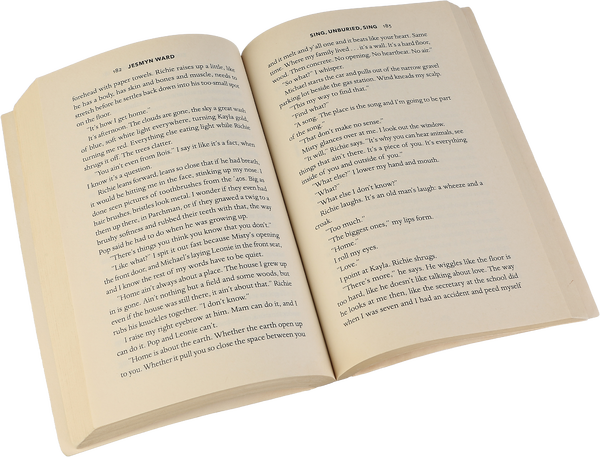
“Home is about the earth. Whether the earth open up to you. Whether it pull you so close the space between you and it melt and it beats like your heart. Same Time.”
“This passage from ‘Sing, Unburied, Sing’ means so much to me. Richie says it to the protagonist, Jojo. He’s a specter, a child ghost, a deeply wounded wanderer, and yet also so wise.” — Imani Perry, author of “Breathe” and “South to America”
Liked it? Try “The Turner House,” by Angela Flournoy or “Lincoln in the Bardo,” by George Saunders.
Interested? Read our review. Then reserve it at your local library or buy it from Amazon, Apple, Barnes & Noble or Bookshop.

29
The Last Samurai
Sibylla, an American expat in Britain, is a brilliant scholar: omnivore, polyglot, interdisciplinary theorist — all of it. Her young son, Ludo, is a hothouse prodigy, mastering the “Odyssey” and Japanese grammar, fixated on the films of Akira Kurosawa. Two questions arise: 1) Who is the real genius? 2) Who is Ludo’s father? Ludo’s search for the answer to No. 2 propels the plot of this funny, cruel, compassionate, typographically bananas novel. I won’t spoil anything, except to say that the answer to No. 1 is Helen DeWitt. — A.O. Scott

Liked it? Try “The Instructions,” by Adam Levin.
Interested? Read our review. Then reserve it at your local library or buy it from Amazon, Apple, Barnes & Noble or Bookshop.

28
Cloud Atlas
Mitchell’s almost comically ambitious novel is indeed a kind of cumulus: a wild and woolly condensation of ideas, styles and far-flung milieus whose only true commonality is the reincarnated soul at its center. The book’s six nesting narratives — from 1850s New Zealand through 1930s Belgium, groovy California, recent-ish England, dystopian Korea and Hawaii — also often feel like a postmodern puzzle-box that whirls and clicks as its great world(s) spin, throwing off sparks of pulp, philosophy and fervid humanism.

Liked it? Try “Same Bed Different Dreams,” by Ed Park or “Specimen Days,” by Michael Cunningham.
Interested? Read our review. Then reserve it at your local library or buy it from Amazon, Apple, Barnes & Noble or Bookshop.

27
Americanah
This is a love story — but what a love story! Crisscrossing continents, families and recent decades, “Americanah” centers on a Nigerian woman, Ifemelu, who discovers what it means to be Black by immigrating to the United States, and acquires boutique celebrity blogging about it. (In the sequel, she’d have a Substack.) Ifemelu’s entanglements with various men undergird a rich and rough tapestry of life in Barack Obama’s America and beyond. And Adichie’s sustained examination of absurd social rituals — like the painful relaxation of professionally “unacceptable” hair, for example — is revolutionary. — Alexandra Jacobs

Liked it? Try “We Need New Names,” by NoViolet Bulawayo, “Netherland,” by Joseph O’Neill or “Behold the Dreamers,” by Imbolo Mbue.
Interested? Read our review. Then reserve it at your local library or buy it from Amazon, Apple, Barnes & Noble or Bookshop.

26
Atonement
Each of us is more than the worst thing we’ve ever done, or so the saying goes. But what a naïve, peevish 13-year-old named Briony Tallis sets in motion when she sees her older sister flirting with the son of a servant in hopelessly stratified pre-war England surpasses disastrous; it’s catastrophic. It’s also a testament to the piercing elegance of McEwan’s prose that “Atonement” makes us care so much.

Liked it? Try “The Sense of an Ending,” by Julian Barnes, “Brooklyn,” by Colm Toíbín or “Life Class,” by Pat Barker.
Interested? Read our review. Then reserve it at your local library or buy it from Amazon, Apple, Barnes & Noble or Bookshop.

25
Random Family
More than 20 years after it was published, “Random Family” still remains unmatched in depth and power and grace. A profound, achingly beautiful work of narrative nonfiction, it is the standard-bearer of embedded reportage. LeBlanc gave her all to this book, writing about people experiencing deep hardship in their full, lush humanity. — Matthew Desmond, author of “Evicted: Poverty and Profit in the American City”

I hate “Random Family.” It robbed us nonfiction writers of all our excuses: Well, it’s easier for fiction writers to achieve that level of interiority. Until “Random Family” entered the chat. It’s easier to create emotion on screen. Until “Random Family” entered the chat. It’s impossible to capture and understand a community if you’re an outsider. Until “Random Family” entered the chat.
Based on a decade of painstaking reporting in a social micro-world, it is a book of total immersion, profound empathy, rigorous storytelling, assiduous factualness, page-turning revelation and literary rizz. I hate “Random Family” because it took away all the excuses. I adore it because it raised the sky. — Anand Giridharadas, author of “The Persuaders: At the Front Lines of the Fight for Hearts, Minds, and Democracy”
Liked it? Try “Invisible Child: Poverty, Survival & Hope in an American City,” by Andrea Elliott or “When Crack Was King: A People’s History of a Misunderstood Era,” by Donovan X. Ramsey.
Interested? Read our review. Then reserve it at your local library or buy it from Amazon, Apple, Barnes & Noble or Bookshop.

24
The Overstory
We may never see a poem as lovely as a tree, but a novel about trees — they are both the stealth protagonists and the beating, fine-grained heart of this strange, marvelous book — becomes its own kind of poetry, biology lesson and impassioned environmental polemic in Powers’s hands. To know that our botanical friends are capable of communication and sacrifice, sex and memory, is mind-altering. It is also, you might say, credit overdue: Without wood pulp, after all, what would the books we love be made of?

Liked it? Try “Greenwood,” by Michael Christie or “Entangled Life: How Fungi Make Our Worlds, Change Our Minds & Shape Our Futures,” by Merlin Sheldrake.
Interested? Read our review. Then reserve it at your local library or buy it from Amazon, Apple, Barnes & Noble or Bookshop.

23
Hateship, Friendship, Courtship, Loveship, Marriage
Munro’s stories apply pointillistic detail and scrupulous psychological insight to render their characters’ lives in full, at lengths that test the boundaries of the term “short fiction.” (Only one story in this book is below 30 pages, and the longest is over 50.) The collection touches on many of Munro’s lifelong themes — family secrets, sudden reversals of fortune, sexual tensions and the unreliability of memory — culminating in a standout story about a man confronting his senile wife’s attachment to a fellow resident at her nursing home.
Liked it? Try “So Late in the Day: Stories of Women and Men,” by Claire Keegan or “Nora Webster,” by Colm Tóibín.
Interested? Read our review. Then reserve it at your local library or buy it from Amazon, Apple, Barnes & Noble or Bookshop.

22
Behind the Beautiful Forevers
If the smash movie “Slumdog Millionaire” gave the world a feel-good story of transcending caste in India via pluck and sheer improbable luck, Boo’s nonfiction exploration of several interconnected lives on the squalid outskirts of Mumbai is its sobering, necessary corrective. The casual violence and perfidy she finds there is staggering; the poverty and disease, beyond bleak. In place of triumph-of-the-human-spirit bromides, though, what the book delivers is its own kind of cinema, harsh and true.

Liked it? Try “Nothing to Envy: Ordinary Lives in North Korea,” by Barbara Demick or “Waiting to Be Arrested at Night: A Uyghur Poet's Memoir of China's Genocide,” by Tahir Hamut Izgil; translated by Joshua L. Freeman.
Interested? Read our review. Then reserve it at your local library or buy it from Amazon, Apple, Barnes & Noble or Bookshop.

21
Evicted
Like Barbara Ehrenreich or Michelle Alexander, Desmond has a knack for crystallizing the ills of a patently unequal America — here it’s the housing crisis, as told through eight Milwaukee families — in clear, imperative terms. If reading his nightmarish exposé of a system in which race and poverty are shamelessly weaponized and eviction costs less than accountability feels like outrage fuel, it’s prescriptive, too; to look away would be its own kind of crime.

Liked it? Try “Nickel and Dimed: On (Not) Getting by in America,” by Barbara Ehrenreich or “Maid: Hard Work, Low Pay, and a Mother's Will to Survive,” by Stephanie Land.
Interested? Read our review. Then reserve it at your local library or buy it from Amazon, Apple, Barnes & Noble or Bookshop.

20
Erasure
More than 20 years before it was made into an Oscar-winning movie, Everett’s deft literary satire imagined a world in which a cerebral novelist and professor named Thelonious “Monk” Ellison finds mainstream success only when he deigns to produce the most broad and ghettoized portrayal of Black pain. If only the ensuing decades had made the whole concept feel laughably obsolete; alas, all the 2023 screen adaptation merited was a title change: “American Fiction.”

Liked it? Try “Yellowface,” by R.F. Kuang or “The Sellout,” by Paul Beatty.
Interested? Read our review. Then reserve it at your local library or buy it from Amazon, Apple, Barnes & Noble or Bookshop.

19
Say Nothing
“Say Nothing” is an amazing accomplishment — a definitive, impeccably researched history of the Troubles, a grim, gripping thriller, an illuminating portrait of extraordinary people who did unspeakable things, driven by what they saw as the justness of their cause. Those of us who lived in the U.K. in the last three decades of the 20th century know the names and the events — we were all affected, in some way or another, by the bombs, the bomb threats, the assassinations and attempted assassinations. What we didn’t know was what it felt like to be on the inside of a particularly bleak period of history. This book is, I think, unquestionably one of the greatest literary achievements of the 21st century. — Nick Hornby, author of “High Fidelity”

Liked it? Try “A Fever in the Heartland: The Ku Klux Klan's Plot to Take Over America, and the Woman Who Stopped Them,” by Timothy Egan or “We Own This City: A True Story of Crime, Cops, and Corruption,” by Justin Fenton.
Interested? Read our review. Then reserve it at your local library or buy it from Amazon, Apple, Barnes & Noble or Bookshop.

18
Lincoln in the Bardo
A father mourns his young son, dead of typhoid; a president mourns his country riven by civil war. In Saunders’s indelible portrait, set in a graveyard populated by garrulous spirits, these images collide and coalesce, transforming Lincoln’s private grief — his 11-year-old boy, Willie, died in the White House in 1862 — into a nation’s, a polyphony of voices and stories. The only novel to date by a writer revered for his satirical short stories, this book marks less a change of course than a foregrounding of what has distinguished his work all along — a generosity of spirit, an ear acutely tuned to human suffering.

Liked it? Try “Sing, Unburied, Sing,” by Jesmyn Ward, “Grief Is the Thing With Feathers,” by Max Porter or “Hamnet,” by Maggie O’Farrell.
Interested? Read our review. Then reserve it at your local library or buy it from Amazon, Apple, Barnes & Noble or Bookshop.

17
The Sellout
Part of this wild satire on matters racial, post-racial, maybe-racial and Definitely Not Racial in American life concerns a group known as the Dum Dum Donut Intellectuals. One of them has produced an expurgated edition of an American classic titled “The Pejorative-Free Adventures and Intellectual and Spiritual Journeys of African-American Jim and His Young Protégé, White Brother Huckleberry Finn, as They Go in Search of the Lost Black Family Unit.” Beatty’s method is the exact opposite: In his hands, everything sacred is profaned, from the Supreme Court to the Little Rascals. “The Sellout” is explosively funny and not a little bit dangerous: an incendiary device disguised as a whoopee cushion, or maybe vice versa. — A.O. Scott
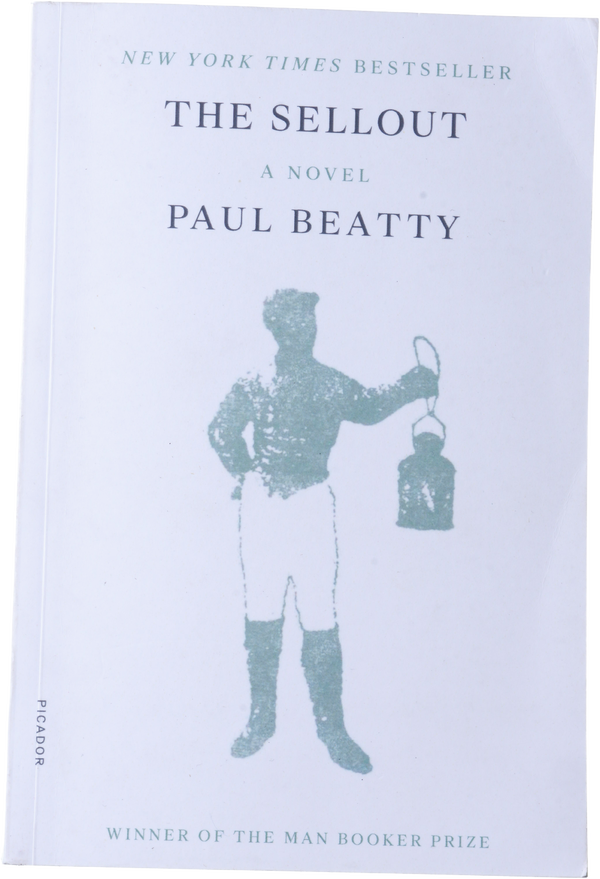
Some voices are so sharp they slice right through reality to reveal everything we’ve been hiding or ignoring or didn’t know was there. This novel cut into me — as a writer and reader and American. It’s fearless and funny and unlike anything else I’ve read. — Charles Yu, author of “Interior Chinatown”
Liked it? Try “Harry Sylvester Bird,” by Chinelo Okparanta or “We Cast a Shadow,” by Maurice Carlos Ruffin.
Interested? Read our review. Then reserve it at your local library or buy it from Amazon, Apple, Barnes & Noble or Bookshop.

16
The Amazing Adventures
of Kavalier & Clay
Set during the first heyday of the American comic book industry, from the late 1930s to the early 1950s, Chabon’s exuberant epic centers on the Brooklyn-raised Sammy Clay and his Czech immigrant cousin, Joe Kavalier, who together pour their hopes and fears into a successful comic series even as life delivers them some nearly unbearable tragedies. Besotted with language and brimming with pop culture, political relevance and bravura storytelling, the novel won the Pulitzer Prize for fiction in 2001.

“The Amazing Adventures of Kavalier & Clay” combines eloquent prose, captivating characters, a deeply researched setting and an adventure that previously only belonged to the pulps. High art and low art and who the heck cares? Chabon opened the doors not just for comic book nerds, but for every kind of nerd, including this gay one. Chabon’s book made me the writer I am, and I’m still dazzled by it: the century's first masterpiece. — Andrew Sean Greer, author of “Less”
Liked it? Try “Carter Beats the Devil,” by Glen David Gold or “The Fortress of Solitude,” by Jonathan Lethem.
Interested? Read our review. Then reserve it at your local library or buy it from Amazon, Apple, Barnes & Noble or Bookshop.

15
Pachinko
“History has failed us, but no matter.” So begins Lee’s novel, the rich and roiling chronicle of a Korean family passing through four generations of war, colonization and personal strife. There are slick mobsters and disabled fishermen, forbidden loves and secret losses. And of course, pachinko, the pinball-ish game whose popularity often supplies a financial lifeline for the book’s characters — gamblers at life like all of us, if hardly guaranteed a win.

Liked it? Try “Homegoing,” by Yaa Gyasi, “The Covenant of Water,” by Abraham Verghese or “Kantika,” by Elizabeth Graver.
Interested? Read our review. Then reserve it at your local library or buy it from Amazon, Apple, Barnes & Noble or Bookshop.

14
Outline
This novel is the first and best in Cusk’s philosophical, unsettling and semi-autobiographical Outline trilogy, which also includes the novels “Transit” and “Kudos.” In this one an English writer flies to Athens to teach at a workshop. Along the way, and once there, she falls into intense and resonant conversations about art, intimacy, life and love. Cusk deals, brilliantly, in uncomfortable truths. — Dwight Garner

Liked it? Try “Checkout 19,” by Claire-Louise Bennett or “Topics of Conversation,” by Miranda Popkey.
Interested? Read our review. Then reserve it at your local library or buy it from Amazon, Apple, Barnes & Noble or Bookshop.

13
The Road
There is nothing green or growing in McCarthy’s masterpiece of dystopian fiction, the story of an unnamed man and his young son migrating over a newly post-apocalyptic earth where the only remaining life forms are desperate humans who have mostly descended into marauding cannibalism. Yet McCarthy renders his deathscape in curious, riveting detail punctuated by flashes of a lost world from the man’s memory that become colorful myths for his son. In the end, “The Road” is a paean to parental love: A father nurtures and protects his child with ingenuity and tenderness, a triumph that feels redemptive even in a world without hope. — Jennifer Egan, author of “A Visit From the Goon Squad”

Liked it? Try “On Such a Full Sea,” by Chang-rae Lee or “The Buried Giant,” by Kazuo Ishiguro.
Interested? Read our review. Then reserve it at your local library or buy it from Amazon, Apple, Barnes & Noble or Bookshop.
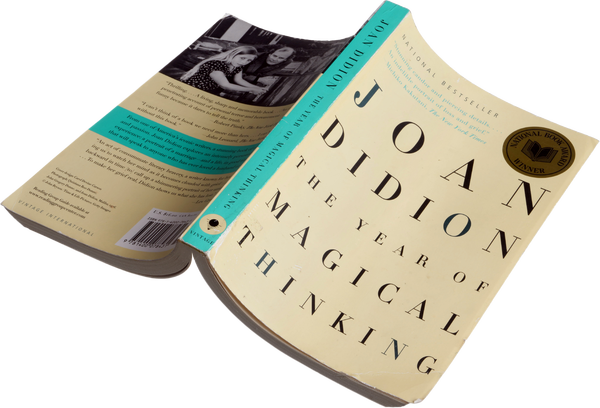
12
The Year of Magical Thinking
Having for decades cast a famously cool and implacable eye on everything from the Manson family to El Salvador, Didion suddenly found herself in a hellscape much closer to home: the abrupt death of her partner in life and art, John Gregory Dunne, even as their only child lay unconscious in a nearby hospital room. (That daughter, Quintana Roo, would be gone soon too, though her passing does not fall within these pages.) Dismantled by shock and grief, the patron saint of ruthless clarity did the only thing she could do: She wrote her way through it.

Liked it? Try “When Breath Becomes Air,” by Paul Kalanithi, “Crying in H Mart,” by Michelle Zauner or “Notes on Grief,” by Chimamanda Ngozi Adichie.
Interested? Read our review. Then reserve it at your local library or buy it from Amazon, Apple, Barnes & Noble or Bookshop.

11
The Brief Wondrous
Life of Oscar Wao
Díaz’s first novel landed like a meteorite in 2007, dazzling critics and prize juries with its mix of Dominican history, coming-of-age tale, comic-book tropes, Tolkien geekery and Spanglish slang. The central plotline follows the nerdy, overweight Oscar de León through childhood, college and a stint in the Dominican Republic, where he falls disastrously in love. Sharply rendered set pieces abound, but the real draw is the author’s voice: brainy yet inviting, mordantly funny, sui generis.

Liked it? Try “Deacon King Kong,” by James McBride or “The Russian Debutante’s Handbook,” by Gary Shteyngart.
Interested? Read our review. Then reserve it at your local library or buy it from Amazon, Apple, Barnes & Noble or Bookshop.

10
Gilead
The first installment in what is so far a tetralogy — followed by “Home,” “Lila” and “Jack” — “Gilead” takes its title from the fictional town in Iowa where the Boughton and Ames families reside. And also from the Book of Jeremiah, which names a place where healing may or may not be found: “Is there no balm in Gilead?” For John Ames, who narrates this novel, the answer seems to be yes. An elderly Congregationalist minister who has recently become a husband and father, he finds fulfillment in both vocation and family. Robinson allows him, and us, the full measure of his hard-earned joy, but she also has an acute sense of the reality of sin. If this book is a celebration of the quiet decency of small-town life (and mainline Protestantism) in the 1950s, it is equally an unsparing critique of how the moral fervor and religious vision of the abolitionist movement curdled, a century later, into complacency. — A.O. Scott

“Then he put his hat back on and stalked off into the trees again and left us standing there in that glistening river, amazed at ourselves and shining like the apostles. I mention this because it seems to me transformations just that abrupt do occur in this life, and they occur unsought and unawaited, and they beggar your hopes and your deserving.”
From a dog-eared, battered, underlined copy of Marilynne Robinson’s “Gilead,” I offer the following quote which undoes me every time I read it — transformation and its possibility is so much a part of what I read for. — Kate DiCamillo, novelist
Liked it? Try “Tinkers,” by Paul Harding or “Zorrie,” by Laird Hunt.
Interested? Read our review. Then reserve it at your local library or buy it from Amazon, Apple, Barnes & Noble or Bookshop.

9
Never Let Me Go
Kathy, Ruth and Tommy are boarders at an elite English school called Hailsham. Supervised by a group of “guardians,” the friends share music and rumors while navigating the shifting loyalties and heartbreaks of growing up. It’s all achingly familiar — at times, even funny. But things begin to feel first off, then sinister and, ultimately, tragic. As in so much of the best dystopian fiction, the power of “Never Let Me Go” to move and disturb arises from the persistence of human warmth in a chilly universe — and in its ability to make us see ourselves through its uncanny mirror. Is Ishiguro commenting on biotechnology, reproductive science, the cognitive dissonance necessary for life under late-stage capitalism? He’d never be so didactic as to tell you. What lies at the heart of this beautiful book is not social satire, but deep compassion.

Liked it? Try “Station Eleven,” by Emily St. John Mandel, “Oryx and Crake,” by Margaret Atwood or “Scattered All Over the Earth,” by Yoko Tawada; translated by Margaret Mitsutani.
Interested? Read our review. Then reserve it at your local library or buy it from Amazon, Apple, Barnes & Noble or Bookshop.

8
Austerlitz
Sebald scarcely lived long enough to see the publication of his final novel; within weeks of its release, he died from a congenital heart condition at 57. But what a swan song it is: the discursive, dreamlike recollections of Jacques Austerlitz, a man who was once a small refugee of the kindertransport in wartime Prague, raised by strangers in Wales. Like the namesake Paris train station of its protagonist, the book is a marvel of elegant construction, haunted by memory and motion.

Liked it? Try “Transit,” by Rachel Cusk or “Flights,” by Olga Tokarczuk; translated by Jennifer Croft.
Interested? Read our review. Then reserve it at your local library or buy it from Amazon, Apple, Barnes & Noble or Bookshop.

7
The Underground Railroad
“The Underground Railroad” is a profound revelation of the intricate aspects of slavery and nebulous shapes of freedom featuring an indomitable female protagonist: Cora from Georgia. The novel seamlessly combines history, horror and fantasy with philosophical speculation and cultural criticism to tell a compulsively readable, terror-laden narrative of a girl with a fierce inner spark who follows the mysterious path of her mother, Mabel, the only person ever known to have escaped from the Randall plantations.
I could hardly make it through this plaintively brutal novel. Neither could I put it down. “The Underground Railroad” bleeds truth in a way that few treatments of slavery can, fiction or nonfiction. Whitehead’s portrayals of human motivation, interaction and emotional range astonish in their complexity. Here brutality is bone deep and vulnerability is ocean wide, yet bravery and hope shine through in Cora’s insistence on escape. I rooted for Cora in a way that I never had for a character, my heart breaking with each violation of her spirit. Just as Cora inherits her mother’s symbolic victory garden, we readers of Whitehead’s imaginary world can inherit Cora’s courage. — Tiya Miles, author of “All That She Carried: The Journey of Ashley’s Sack, a Black Family Keepsake”

“Mabel had packed for her adventure. A machete. Flint and tinder. She stole a cabin mate’s shoes, which were in better shape. For weeks, her empty garden testified to her miracle. Before she lit out she dug up every yam from their plot, a cumbersome load and ill-advised for a journey that required a fleet foot. The lumps and burrows in the dirt were a reminder to all who walked by. Then one morning they were all smoothed over. Cora got on her knees and planted anew. It was her inheritance.”
Chosen by Tiya Miles.
Liked it? Try “The Prophets,” by Robert Jones Jr., “Washington Black,” by Esi Edugyan or “The American Daughters,” by Maurice Carlos Ruffin.
Interested? Read our review. Then reserve it at your local library or buy it from Amazon, Apple, Barnes & Noble or Bookshop.

6
2666
Bolaño’s feverish, vertiginous novel opens with an epigraph from Baudelaire — “An oasis of horror in a desert of boredom” — and then proceeds, over the course of some 900 pages, to call into being an entire world governed in equal parts by boredom and the deepest horror. The book (published posthumously) is divided into five loosely conjoined sections, following characters who are drawn for varying reasons to the fictional Mexican city of Santa Teresa: a group of academics obsessed with an obscure novelist, a doddering philosophy professor, a lovelorn police officer and an American reporter investigating the serial murders of women in a case with echoes of the real-life femicide that has plagued Ciudad Juárez, Mexico. In Natasha Wimmer’s spotless translation, Bolaño’s novel is profound, mysterious, teeming and giddy: Reading it, you go from feeling like a tornado watcher to feeling swept up in the vortex, and finally suspect you might be the tornado yourself.

Liked it? Try “Compass,” by Mathias Énard; translated by Charlotte Mandell.
Interested? Read our review. Then reserve it at your local library or buy it from Amazon, Apple, Barnes & Noble or Bookshop.

5
The Corrections
With its satirical take on mental health, self-improvement and instant gratification, Franzen’s comic novel of family disintegration is as scathingly entertaining today as it was when it was published at the turn of the millennium. The story, about a Midwestern matron named Enid Lambert who is determined to bring her three adult children home for what might be their father’s last Christmas, touches on everything from yuppie excess to foodie culture to Eastern Europe’s unbridled economy after the fall of communism — but it is held together, always, by family ties. The novel jumps deftly from character to character, and the reader’s sympathies jump with it; in a novel as alert to human failings as this one is, it is to Franzen’s enduring credit that his genuine affection for all of the characters shines through.

Sometimes we have a totemic connection to a book that deepens our appreciation. I had Jonathan Franzen's brand-new doorstop of a hardcover with me when I was trapped in an office park hotel outside Denver after 9/11. The marvelous, moving, often very funny novel kept me company when I needed company most. As Franzen himself wrote, “Fiction is a solution, the best solution, to the problem of existential solitude.” — Chris Bohjalian, author of “The Flight Attendant”
Liked it? Try “Middlesex,” by Jeffrey Eugenides, “Commonwealth,” by Ann Patchett or “The Bee Sting,” by Paul Murray.
Interested? Read our review. Then reserve it at your local library or buy it from Amazon, Apple, Barnes & Noble or Bookshop.

4
The Known World
This novel, about a Black farmer, bootmaker and former slave named Henry Townsend, is a humane epic and a staggering feat of wily American storytelling. Set in Virginia during the antebellum era, the milieu — politics, moods, manners — is starkly and intensely realized. When Henry becomes the proprietor of a plantation, with slaves of his own, the moral sands shift under the reader’s feet. Grief piles upon grief. But there is a glowing humanity at work here as well. Moments of humor and unlikely good will bubble up organically. Jones is a confident storyteller, and in “The Known World” that confidence casts a spell. This is a large novel that moves nimbly, and stays with the reader for a long time. — Dwight Garner

Liked it? Try “The Water Dancer,” by Ta-Nehisi Coates or “A Mercy,” by Toni Morrison.
Interested? Read our review. Then reserve it at your local library or buy it from Amazon, Apple, Barnes & Noble or Bookshop.

3
Wolf Hall
It was hard choosing the books for my list, but the first and easiest choice I made was “Wolf Hall.” (“The Mirror and the Light,” the third book in Mantel’s trilogy, was the second easiest.)
We see the past the way we see the stars, dimly, through a dull blurry scrim of atmosphere, but Mantel was like an orbital telescope: She saw history with cold, hard, absolute clarity. In “Wolf Hall” she took a starchy historical personage, Thomas Cromwell, and saw the vivid, relentless, blind-spotted, memory-haunted, grandly alive human being he must have been. Then she used him as a lens to show us the age he lived in, the vast, intricate spider web of power and money and love and need — right up until the moment the spider got him. — Lev Grossman, author of “The Bright Sword”

Liked it? Try “The Lion House: The Coming of a King,” by Christopher de Bellaigue or “The Books of Jacob,” by Olga Tokarczuk; translated by Jennifer Croft.
Interested? Read our review. Then reserve it at your local library or buy it from Amazon, Apple, Barnes & Noble or Bookshop.

2
The Warmth of Other Suns
Wilkerson’s intimate, stirring, meticulously researched and myth-dispelling book, which details the Great Migration of Black Americans from South to North and West from 1915 to 1970, is the most vital and compulsively readable work of history in recent memory. This migration, she writes, “would become perhaps the biggest underreported story of the 20th century. It was vast. It was leaderless. It crept along so many thousands of currents over so long a stretch of time as to be difficult for the press truly to capture while it was under way.” Wilkerson blends the stories of individual men and women with a masterful grasp of the big picture, and a great deal of literary finesse. “The Warmth of Other Suns” reads like a novel. It bears down on the reader like a locomotive. — Dwight Garner

Liked it? Try “The Twelve Tribes of Hattie,” by Ayana Mathis, “All Aunt Hagar’s Children,” by Edward P. Jones or “Traveling Black: A Story of Race and Resistance,” by Mia Bay.
Interested? Read our review. Then reserve it at your local library or buy it from Amazon, Apple, Barnes & Noble or Bookshop.

1
My Brilliant Friend
The first volume of what would become Ferrante’s riveting four-book series of Neapolitan novels introduced readers to two girls growing up in a poor, violent neighborhood in Naples, Italy: the diligent, dutiful Elena and her charismatic, wilder friend Lila, who despite her fierce intelligence is seemingly constrained by her family’s meager means. From there the book (like the series as a whole) expands as propulsively as the early universe, encompassing ideas about art and politics, class and gender, philosophy and fate, all through a dedicated focus on the conflicted, competitive friendship between Elena and Lila as they grow into complicated adults. It’s impossible to say how closely the series tracks the author’s life — Ferrante writes under a pseudonym — but no matter: “My Brilliant Friend” is entrenched as one of the premier examples of so-called autofiction, a category that has dominated the literature of the 21st century. Reading this uncompromising, unforgettable novel is like riding a bike on gravel: It’s gritty and slippery and nerve-racking, all at the same time.
Liked it? Try “The Book of Goose,” by Yiyun Li, “Cold Enough for Snow,” by Jessica Au or “Lies and Sorcery,” by Elsa Morante; translated by Jenny McPhee.
Interested? Read our review. Then reserve it at your local library or buy it from Amazon, Apple, Barnes & Noble or Bookshop.
My Tally
I haven’t read any of these books yet ...
If you’ve read a book on the list, be sure to check the box under its entry, and your final count will appear here. (We’ll save your progress.)
... but I’m sure there’s something for me.
Keep track of the books you want to read by checking the box under their entries.
Methodology
In collaboration with the Upshot — the department at The Times focused on data and analytical journalism — the Book Review sent a survey to hundreds of novelists, nonfiction writers, academics, book editors, journalists, critics, publishers, poets, translators, booksellers, librarians and other literary luminaries, asking them to pick their 10 best books of the 21st century.
We let them each define “best” in their own way. For some, this simply meant “favorite.” For others, it meant books that would endure for generations.
The only rules: Any book chosen had to be published in the United States, in English, on or after Jan. 1, 2000. (Yes, translations counted!)
After casting their ballots, respondents were given the option to answer a series of prompts where they chose their preferred book between two randomly selected titles. We combined data from these prompts with the vote tallies to create the list of the top 100 books.
My wife and I share books we love with our kids, and after I raved about “Bel Canto” — the voice, the setting, the way romance and suspense are so perfectly braided — I gave copies to my kids, and they all loved it, too. My son was in high school then, and he became a kind of lit-pusher, pressing his beloved copy into friends’ hands. We used to call him the Keeper of the Bel Canto. — Jess Walter, author of “Beautiful Ruins”